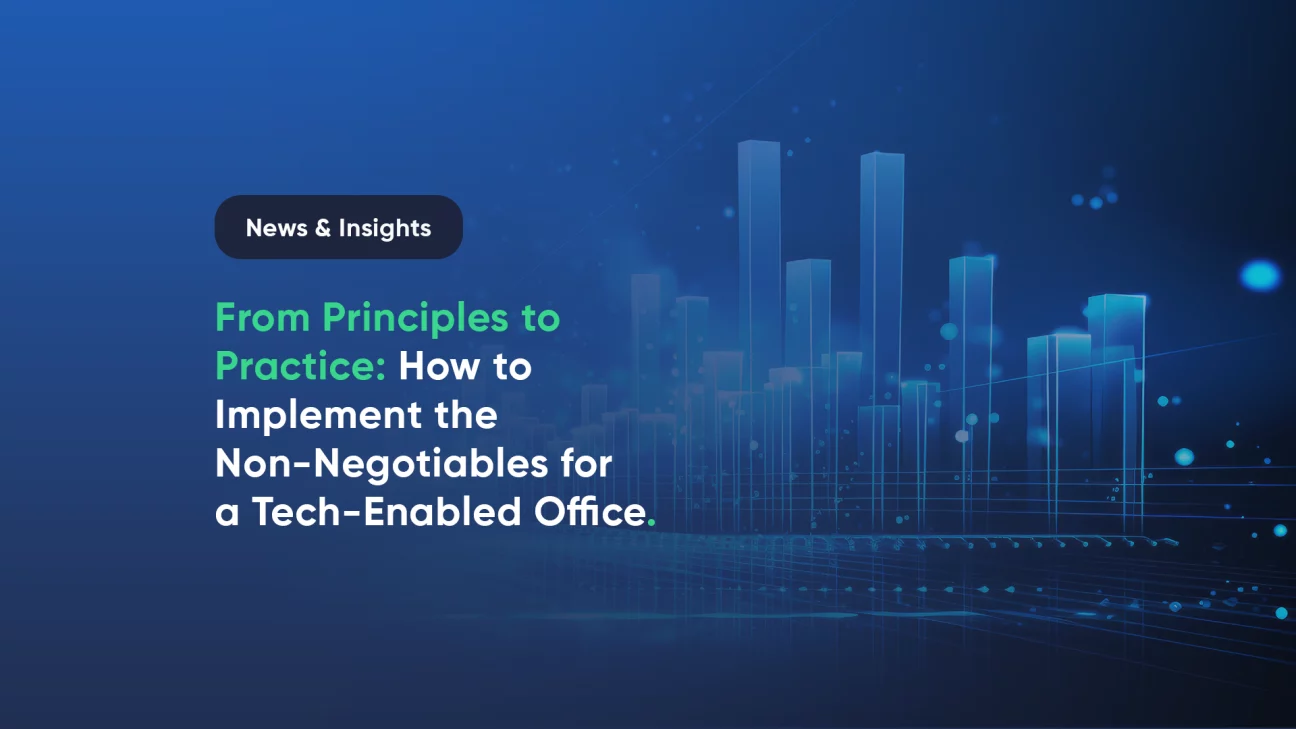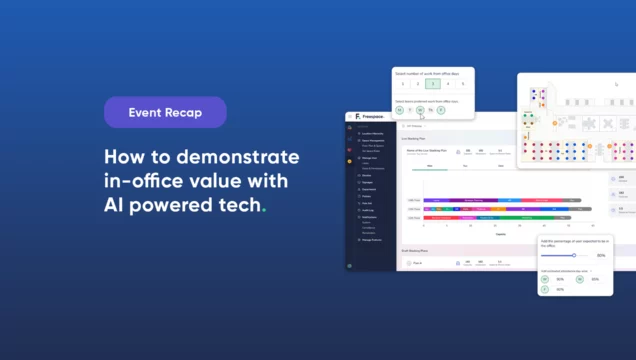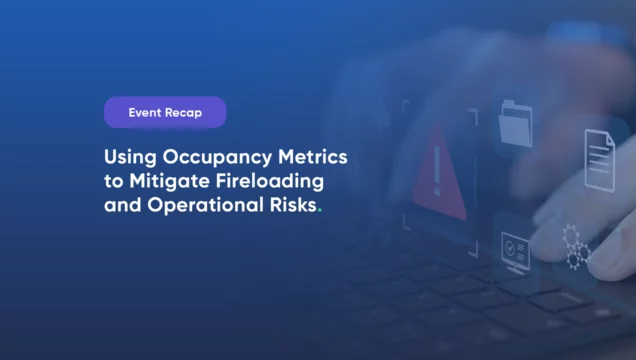

It’s easy to picture the “office of the future” – AI powered systems, smooth collaboration, and help at the touch of a button. But for most workplaces, that idea feels more like a vision than reality.
Budgets are tight. Old systems are still in place. And changing everything at once? That’s overwhelming.
The good news: you don’t need a huge budget or major tech overhaul to start improving your office. Strategic changes can help you optimize the workplace, making it a place that works for your business and employees.
A recent article from Work Design Magazine [ref.1] highlighted the non-negotiables for a tech-enabled office. In this blog, we explore how those principles can be put into action – and how Freespace helps organizations make them a reality.
1. Maximize your meeting room efficiency.
Meeting rooms often don’t match the real needs of employees or the business. Large rooms for six to twelve people are sometimes used by only two or four, while smaller rooms may not have enough chairs to accommodate everyone. Technology like cameras and audio for hybrid meetings is important, but it alone doesn’t make a space efficient.
True efficiency considers how rooms work for people: availability should be clear, spaces appropriately sized, and booking or cancellation simple.
Combining Freespace occupancy insights with room booking data, organizations can merge occupancy and booking data to gain a complete view of how spaces are being used. This makes scheduling and layouts more efficient while ensuring fair access to meeting rooms. When paired with standardized tools, wireless screen sharing, and clear signage, these insights make meetings smoother, boost participation, and reduce scheduling conflicts.
2. Simplify Space Management.
Double-booked or poorly managed spaces can make the office experience frustrating and inefficient for employees. Basic booking systems alone don’t provide the insights needed to optimize how space is used.
With Freespace desk booking and Hybrid Space Manager, organizations can manage desks, collaboration zones, and rooms efficiently. These tools provide real-time availability, enable employees to book spaces ahead of time, and show how spaces are actually being used.
By combining booking data with occupancy insights, organizations can make better decisions about space allocation, ensure everyone has a place to work when they need it, and create a smoother, more flexible office experience that aligns with their WFO policies and meets team and individual needs. Employees enjoy more predictable and accessible spaces, and organizations maximize the value of their real estate.
3. Make Data-driven Decisions.
Collecting data on office usage is only valuable if it drives actionable change. Without analysis, data doesn’t improve how spaces are used.
Freespace analytics aggregates information from room bookings, sensors, and building systems into easy-to-read insights. Organizations can quickly identify crowded or underused areas and adjust layouts and resources accordingly. This data-driven approach ensures offices are adaptable, efficient, and aligned with how employees actually work, supporting hybrid models and maximizing space.
4. Design for Employee Experience.
Technology should serve people, not the other way around. Employee experience – including comfort, productivity, and engagement – should guide office design.
Clear signage and wayfinding are essential for helping employees navigate the office efficiently and feel confident using the space. Freespace Wayfinding & Digital Signage integrates with your existing software, including sensor data and desk or room booking systems, to provide real-time availability, interactive maps, and directional guidance throughout the office.
By connecting to occupancy and booking systems, signage updates automatically to show available desks, meeting rooms, and collaboration spaces. This reduces frustration, saves time, and improves the overall flow of movement in the office. Combined with insights from usage data, it helps create a more welcoming, intuitive, and employee-friendly environment.
A tech-enabled office doesn’t require a full overhaul. By connecting occupancy, booking, and sensor data, organizations can make meeting rooms, desks, and hybrid spaces work more efficiently while providing employees with clear guidance and easy access to the spaces they need.
Freespace brings these systems together in one integrated platform, helping employees find the right space quickly and giving organizations the insights to manage their workplace effectively.
Start optimizing your workplace today with Freespace and turn data into practical improvements that make a real difference for your organisation and employees – talk to us.
[ref.1]: “5 Non-Negotiables for the Tech-Enabled Office” – Work Design Magazine, October 2025


